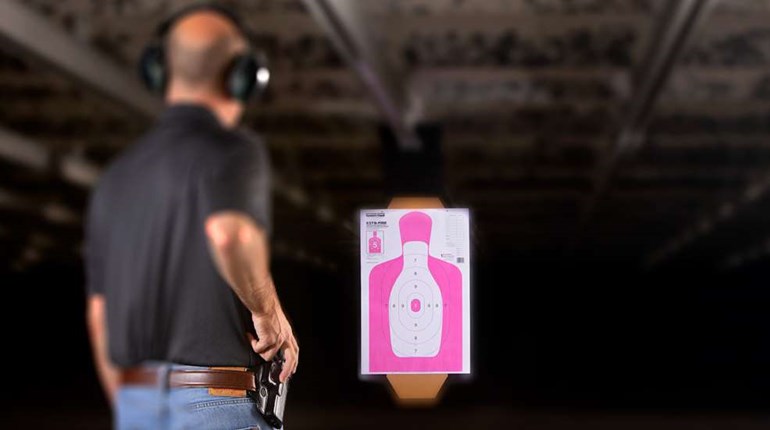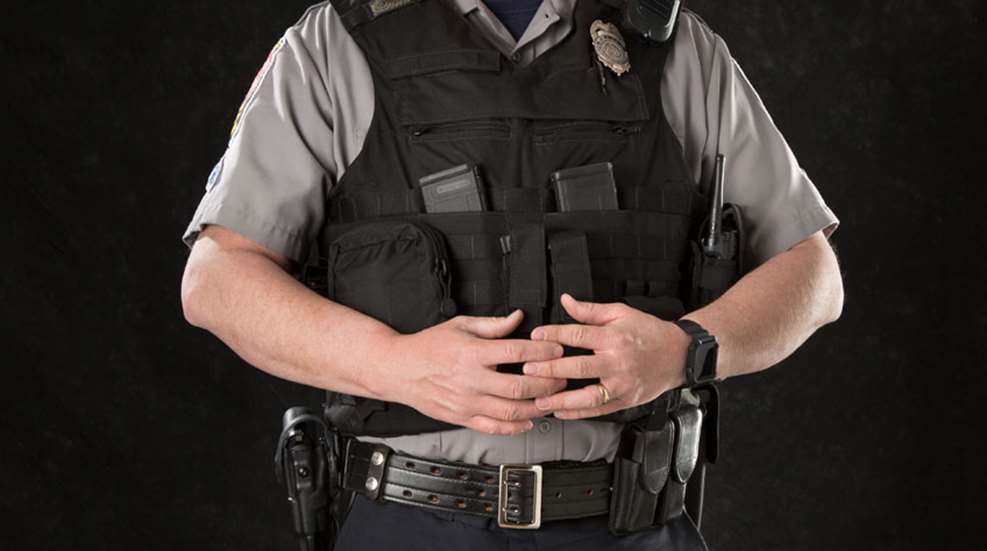
When it comes to engaging a violent physical threat at bad-breath distance, most would rather solve the tactical problem with a handgun as opposed to going hands-on with an assailant.
You can never know why, when or where an attack may occur. You won’t know if it’s a knife attack, an active shooter or a baseball bat coming straight at your brain box. All the specifics of an immediate assault are provided only by your attacker(s). At the time and place of their choosing, you may not have a firearm, the opportunity to access or deploy your firearm, or exigent circumstances may be such that even if you could, you may not be able to take the shot due to myriad reasons.
As such, you could very well be caught in a situation where you may need a temporary defensive solution until you can use your pistol. Either getting something in your hands to use as a weapon-of-opportunity or moving to a more-advantageous position will buy you the time needed or create the conditions necessary to effectively deploy your firearm.
To give you the decisive advantage in such situations, there are three personal combat-control options you can add to your tool kit to help you take control of a physical threat: Control of your position, control of your balance and control of your gun (or non-ballistic weapon).
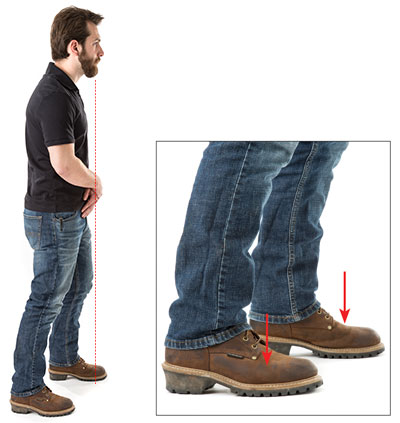
Control of Position
Forewarned is forearmed. The very best early-warning system is your own personal-security radar, better known as situational awareness. If you can hear it, see it or smell it coming, you have gained a leg up in the battle to reverse the action-reaction power curve. The earlier you perceive the start of an active threat, the greater your chances of solving the problem at the onset and placing yourself in an optimal physical position.
Movement is paramount to gaining a position of dominance. Mobility is essential to survivability. It is mandatory to create distance, get behind cover or use concealment. You must be able to change your position relative to your threat to ensure your personal defense.
Movement to higher ground, or to your vehicle or behind a brick wall all require a change of physical position. Whether an attacker is trying to reach you with a rifle, a handgun or seeking to chop your head off with a machete, a moving target is always more difficult to hit than a stationary target.
Movement causes threat deterrence, engagement delay and further increases target difficulty for the attacker. Target difficulty is increased because you have become a moving target, are creating more distance between you and the assailant(s) or have effectively placed yourself in a physical position where you may no longer be targeted. The objective of movement is to cause your attacker(s) to ask the question “Is there an easier target?” and answer with “Yes.”
The converse is also true. Loss of mobility represents a significant loss of survivability options. Control of position is at the very top of the list. Stay mobile. Movement is a paramount physical-defense option. Yes, you may have the mental toughness and physical skillset to mount an effective defense. However, without mobility you are placed at a significant tactical disadvantage. Those with little or no mobility (injured, infirm, etc.) are adversely affected by this handicap—a sad fact of life. Same goes for subjects of the animal kingdom.
Someone chasing you down, swinging a baseball bat will have a much more difficult time contacting your melon if you keep moving and changing position. If someone was trying to shoot or swing a blade at you, you’d probably want to move as fast as you can away from that threat. The best way to accomplish this task is to first convert your body to a stable fighting platform.
Converting your body to a stable fighting platform requires a few key components. Paramount among these is stability. Having stability means that you have the best-possible connection to mother earth affording you optimal body mechanics to rapidly move yourself, and possibly others, out from harm’s way and/or to a more-advantageous physical position. The second, and equally important, is balance. Either you control and maintain your balance, or it may be taken from you by the violence of a dynamic physical altercation. How can you control your balance?
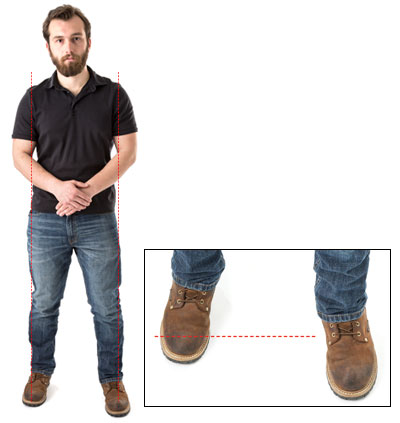
Control of Balance
You probably figured out walking in your first year here on this planet and haven’t since given it a second thought. You just don’t consciously think about it anymore than you think about your heartbeat, breathing or other autonomic bodily functions. Walking, running, climbing stairs, jumping and standing all require good control of balance. Fighting with a gun also requires you to do all of the above, plus additionally use your balance as part of a stable fighting platform to deliver combat-effective rounds downrange, possibly while moving.
How can you build a stable fighting platform by controlling your balance? Since the dawn of time, martial-arts masters have taught that controlling your balance is critical to your survival in self-defense. They teach you to beware of your attacker(s) taking your balance. “If they take from you your balance, they may then take from you your life.” Weapon instructors, especially in the military and certain government agencies, teach to keep your enemies off balance lest they take you off yours and you are found with your guard down.
Control of balance is critical to both rapid movement and effective use of the firearm. To have good balance means a solid defensive foundation. Building your stable fighting platform, like building a house, starts with a concrete foundation. Set your feet flat on the ground (maximum contact equals maximum control) about shoulder-width apart and directly under your hips. All 10 toes can be touching the same imaginary line of demarcation or you can have your dominant foot’s toes along a line perpendicular to the instep of your non-dominant foot. Either configuration will set a strong initial foundation.
Moving up the ladder from the ground up, your knees should be slightly bent, remain flexible and not locked or frozen. Like any good shock absorber, your joints must be prepared for rapid movement. If you end up standing there with your knees locked completely straight, then you’ve just added precious time to your already-precarious immobility. You can’t move left or right or in any direction with your knees locked. Keep your knees unlocked and prepped for rapid movement in any direction.
Moving further up, to above your knees, the heaviest part of your body weight is your body core. Measured from your hips to your shoulders, the position of your core is the center mass of your balance. Controlling that centered mass is what controls your balance. You want to have your overall weight slightly forward as opposed to directly over the flat of your feet or literally on your heels.
With your feet planted firmly, your knees unlocked and your center mass leaning ever so slightly forward, you have successfully created a functional and stable base. You can use the powerful stability of this lower body base to deliver rounds from any type of firearm system, hand strikes or even defense with a non-ballistic weapon.
Now that you’ve built a solid foundation from the gun belt down, your hands should be positioned above your belt, always. Depending on the agency, watch some law enforcement officer as they interview a subject. The quintessential law enforcement field interview stance requires the lower body to be in a stable fighting platform and the hands up as a barrier between the officer and a potential threat. It also places your hands in closer proximity to your handgun relative to your carry position.
Watch any U.S. Secret Service agent or other protective-services professional on the job. Their hands are in similar position as the law enforcement field interview position, and their body is poised in a stable fighting platform in preparation for engagement of an active physical threat at a moment’s notice.
You can easily maintain a stable fighting platform for any length of time. Establishing a stable fighting platform demonstrates good control of your balance. It looks very unassuming and non-aggressive, yet you are ready to quickly change your physical position or rapidly deploy your firearm. The next time you have a conversation with someone you don’t know, get into a stable fighting platform. They won’t be able to tell what you’re up to. Only you will know that you are in full control of your balance and can use it proactively if things start breaking bad.
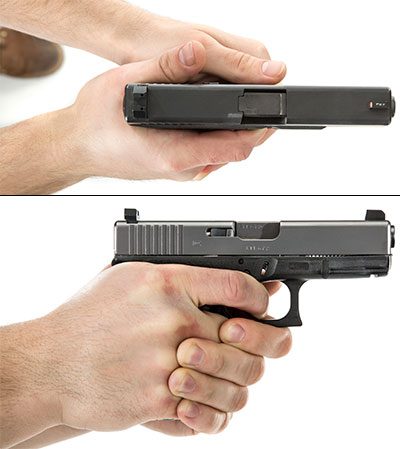
Control of Your Firearm
Odds are if you’re reading this, you’re an experienced shooter. You know that shooting skills are like any other physical skills in that they are perishable and require ongoing maintenance. You probably train on a regular basis with your firearm and run drills to maintain your defensive-shooting skills.
In consideration of combat-effective round placement, there are fundamental skills that require complete control of your gun by way of muzzle discipline: Rapid Deployment, Fire Control and Recoil Recovery.
One of the most important skills in controlling your weapon is to present your muzzle to the threat as quickly as possible. This task is accomplished by rapid access and deployment from your carry position.
Practicing safe gun handling is paramount to your health and those around you. Presentation of your handgun from concealment to facilitate rapid deployment requires the skill to quickly move your hands from their ready position to reposition your cover garment, then disengage any holster-retention devices. Next, you must be able to draw the pistol from its holster and present the muzzle to the threat in a timely manner, all the while adhering to the four basic firearms-safety rules.
Attaining and maintaining a positive grip on the handgun from the get go will support this rapid deployment.
Paramount to effective defensive shooting is to not displace orientation of the muzzle from your intended target alignment. In plain speak, don’t move your muzzle when you break the shot—a very simple concept but not an easy one to accomplish, especially at combat speeds and under duress.
Failing good muzzle discipline with a firm controlling grip, you will inadvertently move the gun out of position at some time during the process of a rapid trigger press. To establish good fire control, in your next training run a few drills that sharpen your skills in rapid round placement on target without disturbing your muzzle position, while simultaneously working your precise trigger control. Grip stability is a critical factor in breaking the shot and achieving positive results.
It is most likely the case that you may need more than one round to stop a violent physical threat. Multiple rounds placed on the same or more than one target means that you will need to control recoil recovery.
Can you feel the muzzle rise? Can you see it? If so, how far did it move? Since you can see it, can you control it by reducing that distance? (which will reduce recovery time) Did you allow the muzzle to drop below your target? The answers to all these questions are what determine your split times (measurement of time in tenths of a second between multiple rounds placed on the same target in rapid succession). Split times adding .25 seconds per round for a total of 6 rounds adds a full 1.5 seconds to your response time. Does being slowed down an additional 1.5 seconds matter in a gunfight? Yes, it does.
Control of your handgun boils down to grip and muzzle discipline. The two are inextricably related and interdependent. You can’t make effective multiple-round placement on either a single or multiple targets without control of recoil recovery. You can’t even make the first shot unless you’ve got excellent fire control and you can’t even do that unless you have rapidly deployed your firearm and have placed your muzzle on the threat. Control of your handgun doesn’t even apply if you give up control of your balance or compromise your physical position.
It is a fact of life that you may never know when or where an active threat may occur, but you can certainly make your assailant(s) question if there are softer targets than someone who clearly demonstrates optimal control of their position, their personal balance and their defensive firearm.












